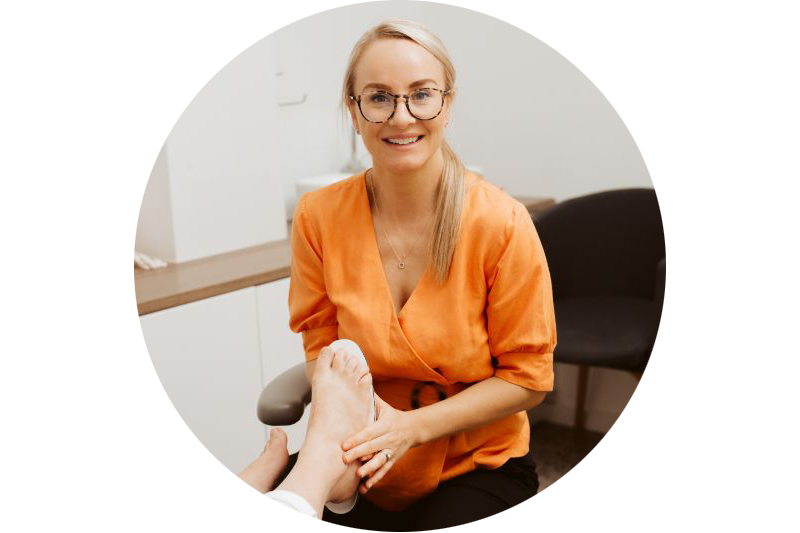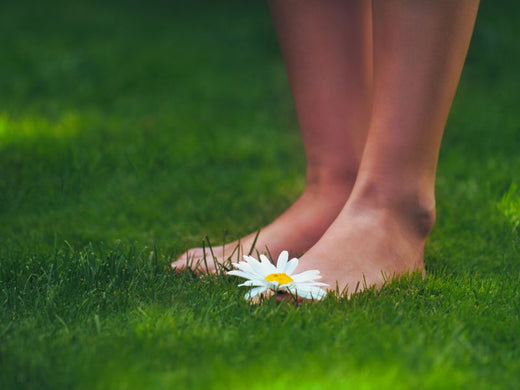10 TIPS FOR HEALTHY FEET IN THE SUMMER
Summer is the time of year when we all want to get out and enjoy the sun, but it's also a time when we have to remember to pay attention to our feet. If you're looking for some tips on how to keep your feet healthy during the summer, we've got some great news: it's not as hard as you think! Here are a few of our favourite ways to give your feet some love this season.

The team at Well Heeled Podiatry, use a range of advanced and effective treatment modalities to treat acute and chronic foot, ankle and heel pain in all age groups. All our clinical podiatrists have gone on to receive further training and qualifications in the areas of dry needling, shockwave therapy, foot mobilisation and manipulation techniques and pre-pointe assessments. Well Heeled Podiatry is recognised by AHPRA the Australian Podiatry Association, Australian Pediatric Podiatry, and Sports and Exercise Australia.
10 tips for healthy summer feet
1. Applying sunscreen to tops of feet
Summer means that you can finally take off your shoes and enjoy being barefoot. But it also means that you need to be extra careful about your feet—especially in the summertime heat.
The most important thing to remember when applying sunscreen to your feet is that it's not just about preventing sunburn, but also protecting against skin cancer.

2. Using urea based cream to soften skin
Urea-based creams can help soften dry skin and keep your feet from cracking or chapping when it gets hot out. It can also help prevent blisters under hard skin buildup if the hard skin is kept soft and hydrated.
Urea-based creams come in different forms, including lotions, moisturizers, balms and even masks. Make sure whichever type you choose has urea in it because this is what makes it so effective at softening and nourishing skin around your feet, making them feel soft and smooth all day long!
High concentration urea creams can only be found in podiatry clinics and can be purchased locally at Well Heeled Podiatry.

3. Foot file to sand hard/dry skin
Foot File is a tool that helps you remove dead skin from your feet, leaving them smooth and soft.
It's perfect for anyone with dry or cracked heels, or anyone who wants to keep their feet looking younger and healthier.
For best results foot files should be used directly after a shower when the hard, dry skin is hydrated.

4. Wash and dry thoroughly especially
in between toes
In the summer, feet are hot and sweaty. It's important to wash your feet carefully so that your skin stays healthy and you do not get splits and infections in between your toes.
You should wash your feet every day. This will help prevent foot odour and other problems caused by bacteria buildup on your skin. Methylated spirits can also help to dry in between the toes and can be applied with a cotton wool ball daily in between the toes.

5. Wearing moisture wicking socks with shoes
It is always a good idea to wear socks with your footwear, especially in summer when your feet are hot and sweaty.
Wearing socks will also minimise your risk of blisters and fungal infections and keep your shoes clean and reduce odours within your footwear.
Active Feet stock a range of moisture wicking and blister prevention sockssuch as feetures, lightfeet, Balega, Experia, 2XU, Mizuno and more.

6. Wear Appropriate Footwear for Exercise
Just because it is hot doesn't mean you should stop wearing your runners for exercise!
Thongs, sandals and slides, although they may feel cooler, are not designed for long walking or exercise. It is important to continue to support your feet with proper fitting runners. This will minimize your risk of falls and foot and ankle injuries.
Well Heeled Podiatry trust the experienced staff at Active Feet for shoe fitting and assessment to ensure their patients get the right runner for their feet.

7. Wearing thongs in showers or communal pools to prevent fungal skin infections
Fungal skin infections are common with people who swim frequently in communal pools and use communal showers. These infections can cause itching, redness, scaling, and inflammation of the skin, which can make you feel uncomfortable, itchy or even painful one the soles of the feet.
Fungi are a common part of the natural environment and often do not cause disease. However, some fungi can cause skin infections, including athlete's foot.
Fungal skin infections can be prevented by wearing thongs in communal showers or pools. This prevents the fungus from spreading to other parts of your body by preventing the fungus from coming into contact with your skin.

8. Checking toenails for any colour changes- indicate fungal infection or skin cancers
Checking your toenails for any colour change or discolouration can be a good indicator of fungal infection or skin cancer.
The key is to look for any changes in the colour of your fingernails and toenails. If you notice any discolouration, it's important to have a podiatrist examine these areas more closely.
9. Seeing a podiatrist to remove any hard skin, corns or heel cracks
If you're experiencing heel cracks, corns, or hard skin on your feet, it's definitely time for a podiatrist to see you.
Hard skin can be caused by a variety of factors— certain medical conditions or medications can make you more prone to forming more hard skin on the soles of the feet, including wearing shoes that are too tight.
In some cases, this leads to corns and heel cracks that are painful and can even result in infections. If you're experiencing these symptoms, seeing a podiatrist is definitely worthwhile!


10. Avoid nail salons that are not regulated for infection control
Nail salons can be an exciting place to get your nails done. They are a great escape from the daily grind, and they offer a relaxing atmosphere for you to get pampered.
However, there is one problem with nail salons that many people don't realize: it's not regulated for infection control. In fact, most of them are not even required by law to have any sort of infection control procedures in place at all!
This means that there is no way of knowing if your nail salon is sterilizing their instruments or not—and this can put you at risk of getting an infection from their equipment or from other clients.
If you're looking for a safe way to get your nails done without worrying about getting an infection, try going to a podiatrist for a medical grade pedicure. You can have your nails, corns, cracked heels and hard skin treated in a sterile environment, using sterilized instruments.




Footwear Freedom: The Ultimate Guide to Preventing Blisters
Why Gym Shoes Are Better for the Gym Than Running Shoes